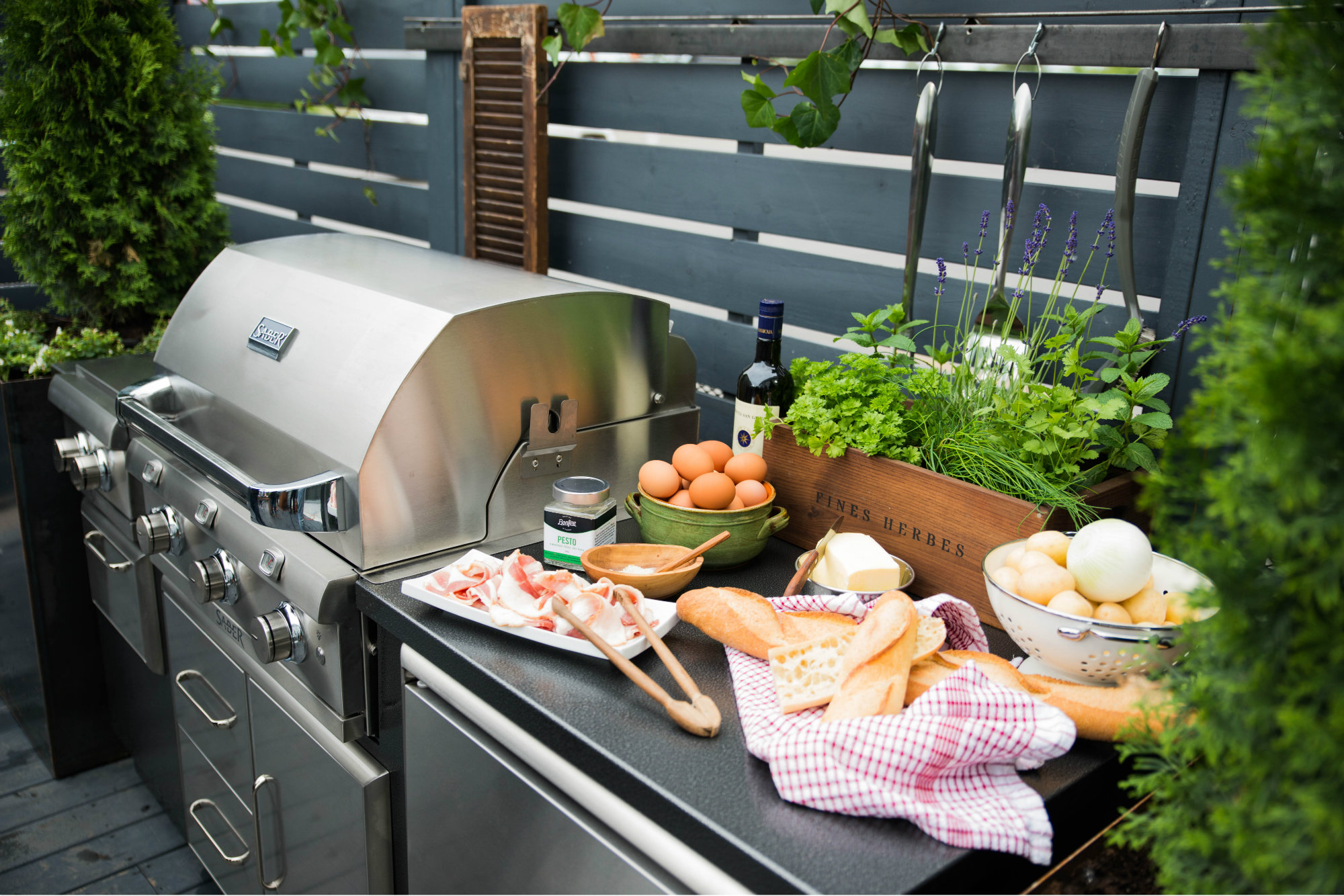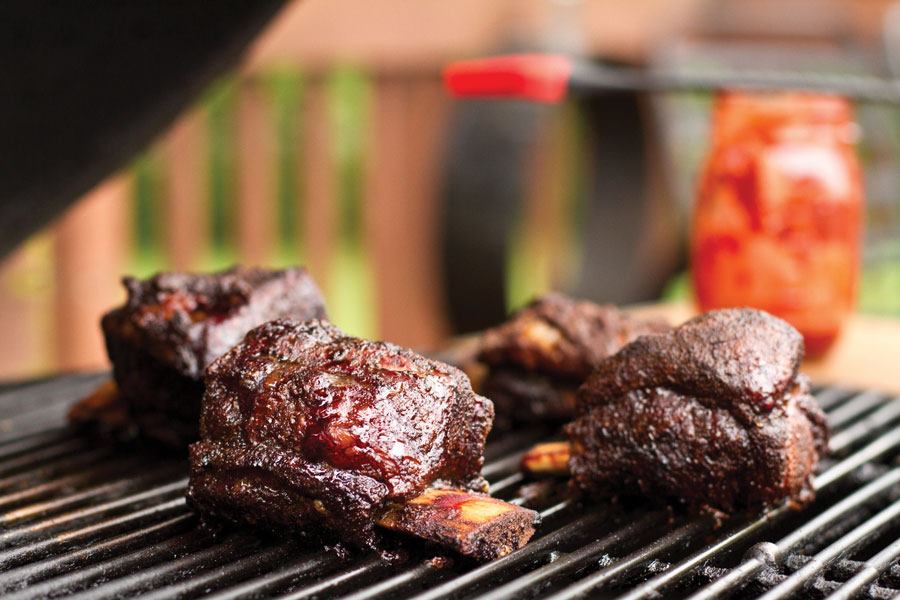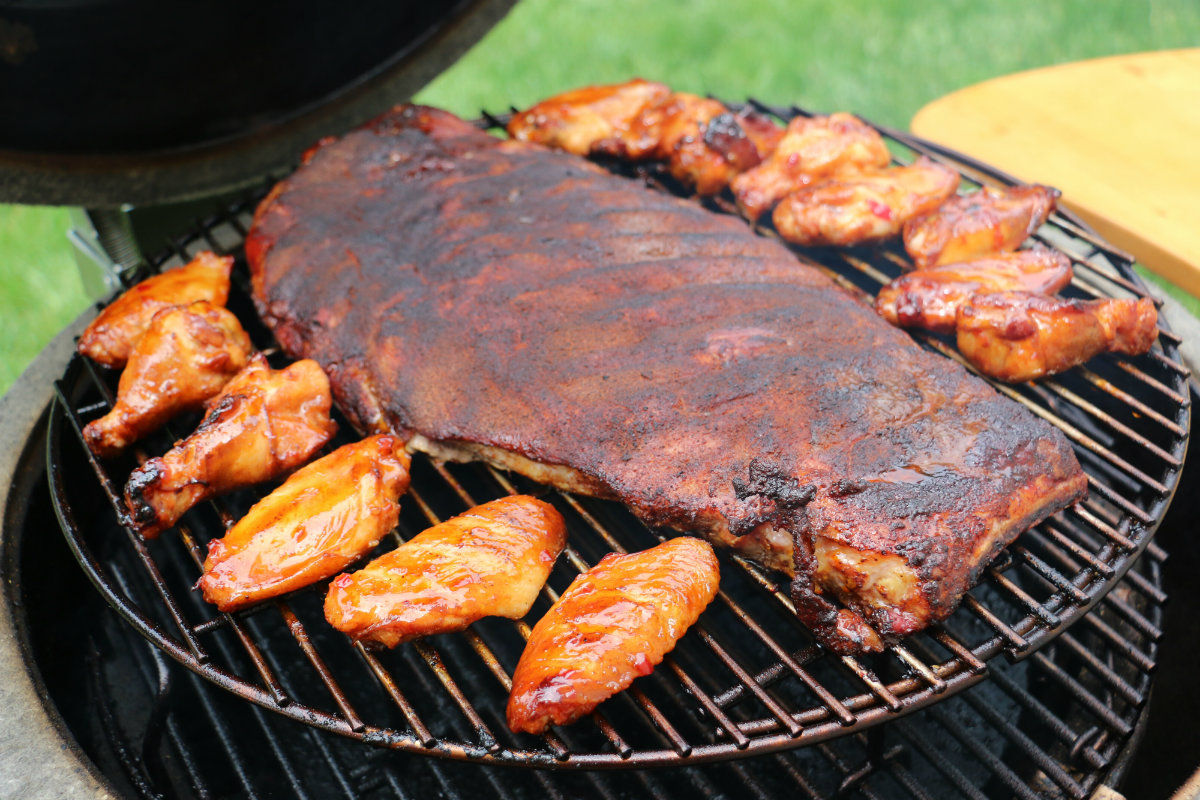The barbecue grill industry developed an innovative solution to a problem that has long vexed serious grillers. Until recently, folks who wanted the convenience of gas and the flavor of charcoal had to buy two outdoor cooking appliances. They simply didn’t have any other choice.
Enter dual- and multi-fuel grills.
The types of units that offer multiple fuel options range the gamut from $300 hybrid models to more sophisticated $7,000 systems with compartmentalized trays for charcoal, pellets and wood chips.
It was a necessary development simply because consumers demanded it. And they were right to. While some situations call for gas, others demand charcoal.
As I see it, gas is a Monday-through-Friday fuel for quick-cook meats such as chicken, chops, fish, brats and burgers. Gas delivers instantaneous heat and is easy to maintain at a constant temperature.
Charcoal, on the other hand, is for low-and-slow cookouts on the weekends. It’s the fuel of choice for a 12-hour pork loin or shoulder — something that needs to be romanced a little.
While the multi-fuel movement has been heating up the market for several years, it wasn’t until very recently that it extended beyond steel grills. Now ceramic kamado-style cookers have gotten in on the action. The advent of conversion kits now allow outdoor chefs to alternate between gas and lump charcoal on a dome-shaped cooker. Before this, ceramics were strictly charcoal-fueled.
In my opinion, the kamado category stands to benefit the most from dual-fuel functionality. Here’s why:
1. The kamado can now appeal to the charcoal-averse market. Lump charcoal isn’t for everyone. It can be difficult to light. Temperatures can be hard to control. And people don’t like dealing with ash. But with a conversion kit, they get the radiant heat and retention properties for which the ceramic dome is renowned, minus what some perceive as the hassle of charcoal.
2. It’s still a charcoal grill. I know I spent the previous paragraph outlining charcoal’s disadvantages. But there’s no getting around it: Lump charcoal delivers a flavor that gas simply cannot replicate. And for the tastiest results, we recommend nothing less than natural lump charcoal. This is a very different thing than your conventional charcoal briquettes, which is essentially particle board refuse that’s been pressed into little squares. It’s fine to use briquettes if you’re in a pinch, but it’s full of additives. Lump, charcoal on the other hand, is kiln-fired hardwood — pure as the driven snow. It’s your go-to fuel when you’re not in a rush.
3. It’s a gas grill that smells like charcoal. After using lump charcoal for several weeks, the smoky aroma remains when you switch over to gas. That means that hints of hardwood such as apple, hickory and mesquite can still flavor of the food, even when cooked with propane or natural gas.
4. Grilling is no longer just a summertime activity. Brave barbecuers are known to endure sub-zero temperatures for savory brisket and ribs. Some enthusiasts even claim cold weather produces a more robust smoke ring, imbuing food with more flavor. In fact, the Hearth, Patio and Barbecue Association estimates that some 43 percent of grill owners in North America will cook outside this winter.
However, it can be difficult to get a conventional steel grill up to the desired temperature in frosty conditions. That’s why many prefer ceramic for winter cookouts. It’s more insulated and therefore better for grilling when chilly. With gas, they can fire up the cooker quicker and avoid frostbite. Why do you think the kamado is such a hot seller in Canada?
The bottom line: Dealers should consider making space for combination units in their showrooms, because they appeal to hardcore grillmasters and casual cooks alike. The ease with which you can switch from one fuel to the other is a slick feature and should be demonstrated at your next parking lot cookout.
-
The Instant Island: A New Category of Outdoor Kitchen is an Affordable Alternative
Prefabricated island grills offer high-performance cooking, versatility at half the cost of custom outdoor kitchens

-
Fire Up Sales with Ceramic Grills
What can bake pizzas, cakes and grill great steaks? Kamado-style cookers can.




